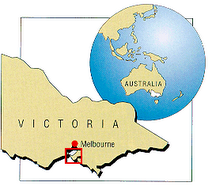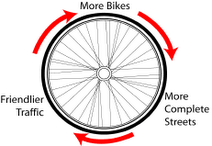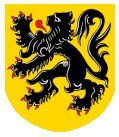
 (Pics added by me as I like them)
(Pics added by me as I like them)Excellent summary by Forester on the US's the Federal Highway Administration (FHWA) research, and its questionable suggestions and methodologies here.
I've reproduced it in its entirety, as it has its application in what not to do in other places where such research has yet to be undertaken or is currently under way, such as in Australia... take heed folks, the roadway is a dangerous place but it needn't be and it needn't be made more dangerous by beaurocratic incompetence.
Posted by: "John Forester" mailto:forester@johnforester.com?Subject=+Re%3ABicycle%20Intersection%20Safety%20Index%20researchbiketransengr
Wed Sep 12, 2007 5:52 pm (PST)
The FHWA has just released papers describing the research concerning the development of a method of estimating, or rating, the safety of an intersection for bicycle travel (and another for pedestrian travel also, bureaucratically lumping the two modes into the same classification).
These can be downloaded from the URLs listed:Final Report - <http://www.tfhrc.gov/safety/pedbike/pubs/06125/>http://www.tfhrc.gov/safety/pedbike/pubs/06125/ User Guide - <http://www.tfhrc.gov/safety/pedbike/pubs/06130/>http://www.tfhrc.gov/safety/pedbike/pubs/06130/TechBrief - <http://www.tfhrc.gov/safety/pedbike/pubs/06129/>http://www.tfhrc.gov/safety/pedbike/pubs/06129/
I have just read the bicycle sections of both the report of the research methods and the application manual.
My first reactions are as follows:
Research method
The authors propose to use the frequency of avoidance actions taken as a stand-in for the much less frequent collisions (collisions are a specific type of crash, the only type of crash being considered here), on the basis of observational practicality.
However, they do not, apparently, consider whose fault produced the need for the avoidance action.
Suppose we observe a cyclist running a stop sign and then weaving frantically to stay out of the way of the through traffic. There certainly was avoidance action by the cyclist. And, quite possibly, none by the motorists, who had insufficient time to take much avoidance action.
Such was the sequence of events when I attempted a left turn from a Palo Alto sidewalk bike path, miscalled a bike lane. Does the presence of avoidance action, in a typical stop signed intersection, taken by the cyclist indicate that the intersection is particularly dangerous? Or does it simply indicate incompetent behavior by the cyclist? So far as I can see, the research takes no notice of this issue.
The authors attempt to validate the connection between the frequency of observed avoidance actions and the subjective evaluations of many people viewing short sequences taken from the observational record, including bicycle activists, planners, engineers, and others.
Frankly, I question the competence of many of these people to make such an evaluation.
There was no indication of any standard of operation to be applied, and in the absence of such a standard the evaluation was purely subjective according to the biases of each evaluator, and we are familiar with many such biases.
Resulting Application Manual
The relevant pages are 11 - 18 of the Manual, in particular pg 11, which contains the Bike ISI models (through, right, left), with definitions of the variables.
The subsequent pages illustrate some of the variables.
Low score, 1, means safe; high score, 6, means dangerous.
Through travel ISI = 1.13 + 0.019 MAINADT + 0.815MAINHISPD + 0.650TURNVEH + 470(RTLANES*BL) + 0.023(CROSSADT*NOBL) + 0.428(SIGNAL*NOBL) + 0.200PARKING
Right turnISI = 1.02 + 0.027MAINADT + 0.519RTCROSS + 0.151CROSSLNS + 0.200PARKING
Left turnISI = 1.100 + 0.025MAINADT + 0.836BL + 0.484SIGNAL + 0.736(MAINHISPD*BL) + 0.380(LTCROSS*NOBL) + 0.200PARKING
Note specially, that TURNVEH refers only to vehicles that might make a right hook collision; RTCROSS applies only for a right turn from a left-side bikelane; others are almost self-explanatory.
Look at the peculiarities of these models.
For straight travel, signals have no effect on safety, except that if there is no bike lane they increase danger.
Crossing traffic volume has an effect, which one would expect, except its effect occurs only when there is no bike lane, and is not cancelled by the presence of a traffic signal.
The presence of right-turn-only lanes increases the danger if there is a bike lane, but not in the absence of a bike lane.
When crossing an intersection without assigned priority, it is important to be able to view the crossing traffic, and that view is affected by the presence of parking on the cross street, yet PARKING fails to consider that.
We know that the most frequent motorist-caused car-bike collision is the motorist left turn, yet there is no variable for left-turning vehicles.
For right turn, the relevant variables are MAINADT, CROSSLNS, and PARKING. MAINADT is given 40% more weight than for through travel, which seems peculiar.
The number of through lanes on the cross street is given the high weight of 0.519, which seems counter to knowledge.
The right-turning cyclist is concerned not with the number of lanes, but with the traffic in the outside lane and its ability to move over to the next lane to its left.
If the number of lanes has any meaning, one would expect more lanes to decrease danger rather than decreasing it.
Furthermore, the right-turn ISI fails to consider the volume and speed of the traffic on the cross street, surely a valid variable.
For left turn, more peculiarities. Same direction motor traffic volume has an effect, and is noted. But the presence of a bike lane is given very high weight, 0.836, but the effect of a bike lane pertains only before any movements are made in preparation for the left turn.
Furthermore, the number of lanes to cross in preparation for the left turn is significant in the model only if there is no bike lane, whereas once the preparation has been started the bike lane is left behind and only the number of lanes to cross is significant.
Furthermore, the presence of a signal makes the left turn operation more dangerous.
And there is no allowance for the known safety feature when making a left turn of the presence of a protected left-turn signal phase.Given both the research methods and the results, I assign no credibility at all to this work.
That's not quite correct.
I assign negative credibility to this work, on the basis that it appears to be based on the actions and opinions of incompetent cyclists, further establishing that our highways should be designed for incompetent operation by cyclists.
John Forester, MS,
PEBicycle Transportation Engineer
7585 Church St.Lemon Grove, CA 91945-2306619-644-5481 http://www.johnforester.com/ [Non-text portions of this message have been removed]









No comments:
Post a Comment